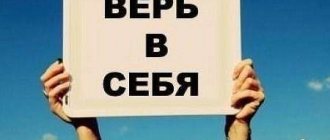What is an igloo
Translated from Inuktitut, “igloo” means “winter dwelling of the Eskimos.” Such houses are dome-shaped buildings, the diameter of which reaches about 3-4 meters, and the height - 2-2.5 meters. The main material for building igloos is ice or snow blocks compacted by the wind. If the snow cover is deep, the entrance to the room is built in the floor, breaking through a small corridor to it. If the snow cover does not have the required depth, then the entrance is built in the wall, adding an additional corridor using snow blocks.
Each Eskimo camp has several buildings, where up to four related families are located. Eskimo housing is divided into two types: summer and winter. The first consists of stone buildings located on a slope, the floor of which is deepened into the ground. From below, a long passage of stones, partially buried in the ground, leads to the house. The last part of the passage, which is located above the floor, is covered with a wide slab of stone, and is at the same height as the bunks in the hut.
The snow house has a completely ordinary layout: the sleeping bunks are located in the back of the room, and there are bunks for lamps on the sides. When building walls above ground, stones or whale ribs are used, whose arcs are spaced so that their ends intersect each other (or both materials). Sometimes, when constructing the roof frame, whale ribs are used, adding supports to the structure. Seal skins are tightly tied to the finished frame (which allows for high-quality insulation of the house from ice), on which small heather bushes and another additional layer of skins are then laid in a thick layer.
Scheme of construction and arrangement of an igloo house
When constructing igloos, snow or ice slabs are used. The blocks are laid in a spiral, from right to left. To do this, two blocks in the first row are cut diagonally to the middle of the third, after which the construction of the second row can begin. During work, each row is slightly tilted so that a neat spherical shape is obtained. The small hole that remains at the top is closed from the inside using a wedge-shaped block. Then the builder, located inside the hut, seals all the cracks with snow.
The entrance tunnel digs through a snowdrift from the outside, ending in a hatch in the floor of the building. If the layer of snow is shallow, then an entrance hole is cut in the wall of the igloo, and a corridor of snow blocks is laid out next to it.
In this video you can watch the process of building a snow igloo house
IGLOO
Igloo (appearance).
IGLU (Eskimo - igdlu), a snowy dwelling among the Eskimos of Arctic America and Greenland. Judging by the finds of snow knives used in the construction of I., it is known no later than the Thule era (2nd half of the 1st millennium). Distributed mainly among the sea hunters (see Animal hunting) who are forced to set up camps on the ice far from the shore, it is also known among deer hunters; I. are also built by participants in polar expeditions.
Igloo: a – general view; b – plan; c – section.
It has the shape of a dome with a diameter of 3–4 (sometimes up to 9) m and height. 2 (up to 3.5) m. It is built from snow slabs laid in a spiral, the cracks between which are lined with snow. Finally, the walls are cemented (“glazed”) from the inside with a layer of ice formed from the heat of a fat lamp lit inside, and form a monolithic dome (the arch of the I. can support the weight of several people or 1 polar bear). The winter entrance is dug in the form of a tunnel in the thickness of the underlying snow and goes inside the dwelling through the floor, the summer entrance is built on the side in the form of a corridor made of snow slabs (about 1.5 m high). At night the entrance is closed with a large block of snow. Sometimes windows are installed in the wall, covered with a membrane of seal intestines or covered with transparent tiles of lake ice. The walls of I. allow light to pass through, which allows you to read and write in it even in cloudy weather. Domed rooms are often added to the I. for storing food, clothing, and dog utensils. Several I. can be united by tunnels, so that their inhabitants can communicate with each other without going outside; I. are also known, connected from 3–5 domed rooms in which St. lived. 25 people More than half of I. is occupied by a bench located opposite the entrance, made of snow blocks and lined with skins; niches for things are cut out in its side wall and covered with snow blocks. They sleep, eat and work on the bed. One I. is usually inhabited by two families, each occupying half of the bed: women with small children lie at the edges, then men, and older children and guests lie in the center; Each family is covered with one blanket made from reindeer skins; fur sleeping bags are also known. Each housewife cooks food on her own fat lamp. For warmth, two other lamps are usually placed - in the back and at the entrance. The temperature inside the vessel rises to 20 °C and is regulated by decreasing or increasing the thickness of the walls. The Eskimos have about. Baffin Island I. is insulated from the inside with seal skins, which are attached to the wall with ropes passing through the snow to the outside and secured there with bone sticks.
Secrets of building a reliable igloo
- When working with blocks that are located next to each other, you should avoid touching their corners, otherwise the structure will become unstable. For convenience, it is recommended to leave a small triangular hole at the bottom of the joint of adjacent blocks (it can be easily sealed with snow in the future).
- It is highly recommended not to move a block installed on a wall in one direction or another, as this may cause it to wear out and lose its original shape. You can simply place a block, trim off the strongly protruding parts on one side and below, and then carefully move it as close as possible to the adjacent block. Then, using a saw, its final finishing is carried out. It is recommended to lay the slabs with the “crust” side inside the structure, as it is more durable.
- To make the work process easier, the upper hole in the dome can be carefully covered with one of the plates. Large cracks that are located between the blocks are sealed with pieces of crust, and small ones are treated with loose snow. Through holes and cracks are easiest to see in the evening, by the light of a small bowl of seal oil burning inside the igloo. In addition, warm air will slightly heat the joints, which will improve the quality of processing of holes and cracks.
- Before lighting a fire inside the igloo, you need to make a hole with a diameter of approximately 10-15 cm on the leeward side in the upper part of the dome and attach a smoke extraction pipe made of strong crust to it.
Interior of an igloo
The interior of the igloo is usually covered with animal skins. Traditional fat bowls act as sources of light and additional heat. When arranging a bed, the Eskimos use two layers of reindeer skins, one of which is laid with the flesh up, and the other with the flesh down. In some cases, in addition to deer skins, old skin from a kayak is used, which allows you to get a very soft and comfortable sleeping place.
During the daytime, the Eskimo hut is so bright that you can easily read or write in it without the need for additional lighting. Moreover, in sunny weather, ice walls can cause such bright light that it causes so-called snow blindness. When the polar twilight begins, the Eskimos can insert windows from thin lake ice into the walls of the hut, cutting small holes for them above the entrance. Zhirniks, used for heating and lighting the living space, provide soft and diffused light, which is enhanced by reflection on the ice dome.
If the vault begins to melt due to exposure to heat, then a 10-15 centimeter layer of snow is scraped off from the outside of the dome with a knife so that the hut cools down and stops melting. If the hut does not heat up, and frost appears on the inside of the dome and falls down in flakes, snow should be collected onto the dome using shovels.
Diagram of a simple igloo house
The main part of the living space opposite the entrance is occupied by a snow bed. When arranging it, they try to use either a natural protrusion of the earth or the surface of a snowdrift on which the dwelling was built. If both options are not possible, then the bed should be laid using several blocks of snow. In some cases, small recesses can be cut into the thickness of the couch, which will act as cabinets. These niches are plugged with small snow blocks.
On the left and right sides of the entrance there are small snow bunks on which lamps, meat, etc. are located. A passage about 1.5 meters wide is left in the center. Eskimos usually sleep with their feet against the wall, across the bunks. One dwelling can accommodate 3-4 families at once. Each family had its own place on the bunk, which was separated from others by a mat woven from grass.
Glass igloo
0
During winter, Hotel Kakslauttanen offers the opportunity to stay in a unique glass igloo.
0
Through the transparent ceiling of which you can enjoy the northern lights and millions of stars in the sky without going outside:
0
0
The glass igloo is a marvel of modern technology, based on innovative ideas and years of scientific research.
0
Thanks to the special heat-resistant glass from which the igloo is built, the temperature inside it always remains at a constant level. This also prevents ice from forming, so the walls and ceiling of the igloo always remain clear, even when the outside temperature drops below -30°C.
0
0
Each igloo is equipped with a toilet and luxury beds. In the evenings, enjoy a hot sauna and a refreshing ice hole.
0
During the day:
0
And at night it’s just you and the stars:
0
0
Modern houses made of ice and snow
Now houses made of snow are being built in the northernmost regions, and it has become a fashionable feature for residents of the north - to have not a country house, but their own snow house for relaxation and pastime.
Modern private house made of ice
Some enterprising people went further and turned this idea into a business.
Mini-hotel in the style of Eskimo snow houses
Fans of winter holidays and travel should definitely stay at least overnight in this hotel.










